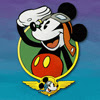Is it in the kind or brand of pencil you use? Is it just a skill some people were born with? Is is how you learned to hold your pencil? Your visual acuity? Your imagination or creativity? Whether your are right- or left-brained?
Nope. It's none of these.
The secret to drawing is—it's fun. No matter what anyone tells you, the secret is that the reason people draw is because they like to. Because it's fun.
Well, you may ask, what about skill? Don't people like to draw because they're skillful? Well, it probably didn't start out that way. The skill didn't lead a person who draws to draw; liking it led them to draw which improved their skill. Of course, when they began to feel skilled, they liked it even more!
Don't forget that skill is completely relative. A "skilled" four-year-old's drawing may look like it was drawn by a seven-year-old, but it doesn't look like it was drawn by a professional artist. You tell the four-year-old how good her drawing is, she beams, and it makes her want to draw more. She does so, and gets better and better. However, if you draw like a seven-year-old (and you're older than seven) you get discouraged. Why?
The reality is, somewhere we stopped thinking drawing was fun. It probably happened because we started paying attention to the critical voice in our heads—whether that voice belonged to us or someone we knew—that said we didn't draw very well. We adults like to think we're good at stuff, so we pay attention to that voice. Point in fact, most of us don't draw very well! Because we adults live in a success-oriented world, we listen to that critical voice, when we shouldn't.
Well, listening to that critical voice is based on the error that we draw to be good at drawing, to improve our skill. No! We draw to have fun. If it is fun, it doesn't matter if it is skilled. That may come. But it shouldn't keep us from drawing for the fun of it!
The activities that will follow are meant to increase the fun you have drawing. They are specifically to help you pay attention to the fun, and forget that critical voice when you draw. They will, coincidentally, build drawing skill as well, but that is only a side benefit that will hopefully add to the fun. Because of the nature of these activities, I would sincerely appreciate any feedback on how to make sure that they have that essential quality of drawing: fun!
